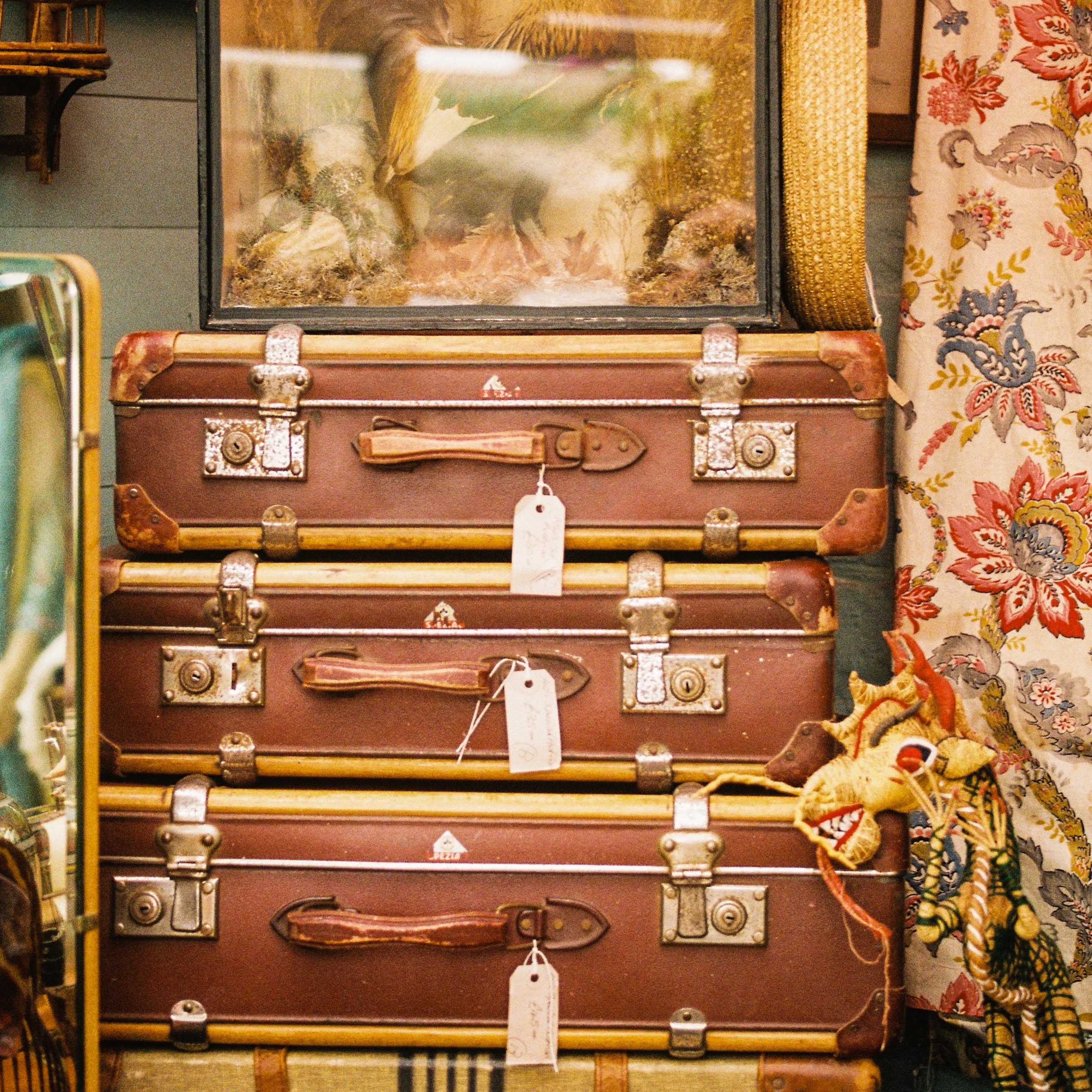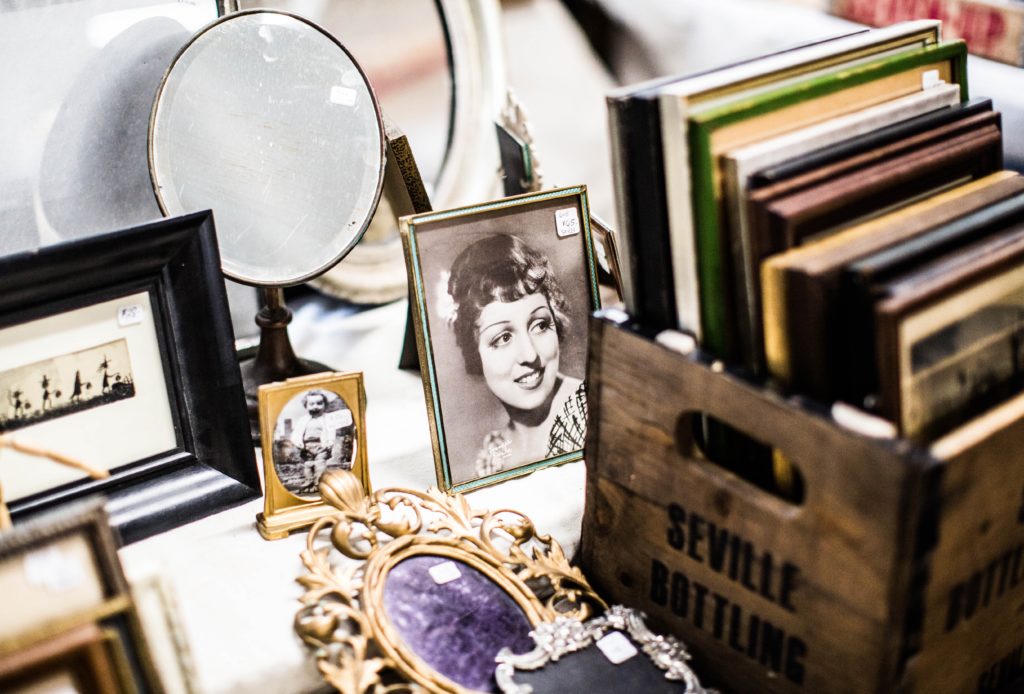Why Vintage Furniture
Vintage furniture pieces can be a beautiful addition to your home, adding a splash of sophistication, history, and whimsy to the room. Vintage pieces are also more unique, and who doesn’t love having items in their home that no one else has? Whether it’s a classic wood carved dining table from the early 1900s or a fun mod plastic accent chair from the 70s, you can find beautiful vintage furniture in any style. New York-based interior designer Charlie Ferrer says, “Vintage warms up and elevates interiors—like art, it is an excellent medium for humanizing a home and for layering in a personal perspective and a point of view on the greater history of design.”
While some vintage furniture could save you money (especially if you intend to refurbish it yourself), some pieces of furniture might have very high price tags. It’s important to know how to determine whether or not the piece is worth the price. Here are our tips for buying vintage furniture so you don’t end up with a purchase you regret.
Worth it?
Some vintage and antique pieces can be exorbitantly priced, and you may be surprised to see that. So are these pieces of furniture worth the expensive tag? That depends. Attributes like rarity, age, materials used, who designed it, and the condition all factor into the price. When it comes to sought-after classic designs, it may be difficult to determine if it’s truly vintage. You also don’t want to buy something vintage that looks good but will fall apart as soon as you take it home. It’s important to know what to look for.
Know your history
Before you venture into shopping for vintage furniture, you should do a little research. Whether you’re looking for chairs, lighting, or a chest of drawers, know what the most desirable and rare vintage pieces are. If that’s what you’d like to own, find out what the investment might be. Look up different popular design styles through the years and become familiar with them.
Decide if you want vintage or antique (vintage meaning between 1920-1980 and antique is pre-1920). Decide what type of design matches your room and your home, whether it’s mid-century modern, art deco, rustic, Rococo, etc. At the very least, if you are searching for a vintage lamp and you come across one, you should know what era and style it is. Beyond that, however, it’s important that you know how to spot the difference between pieces that are great vintage finds and pieces that are just plain old.
What to look for in vintage furniture pieces
When buying vintage furniture, it’s important to know what to look for to tell if it’s legitimate. For example, let’s assume you’re looking for a new-to-you chair. You visit an estate sale and see several different chairs that could all be vintage. How do you know whether these are authentic, worth buying, or if they are even really vintage? Here are some things to look for.
Fabric and filling
The first giveaway is usually the fabric. Fabric stitching can reveal its age. Was the fabric hand-stitched? Is it worn in the areas you’d expect a chair to wear from someone sitting on it over the years? If you’re not certain based on the fabric alone, look at the seat filling of an upholstered chair. Fillings have changed over time. If it’s filled with feathers, down, or springs, it’s likely an older chair. Synthetic filling fibers mean it’s a more modern chair.
Screws
Whether or not it’s upholstered, you should check how the chair was made. What is the type of screws used? Modern screws mean a modern chair. If slotted screws were used, it’s likely older. If the chair support system is made without any screws at all, it might be antique from the 18th century. Sometimes modern artisan-made chairs will also be made the traditional way without screws, but it will likely have the maker’s name marked on the bottom.
Maker’s information
The maker’s information on a stamp, label, or carved into the bottom of the chair is usually the best clue to its age. If you can find any sort of manufacturing information on the chair, try to look it up online and see what you can find. Be suspicious of chairs that seem to have that information missing if it also seems too good to be true. This is another good reason to do your research beforehand: so you can be quick to recognize any major designers from the past that you’d want to own!
Structural integrity
Check the “bones” of the piece. For a chair, check the legs for weakness or damage. Sit-test your chair to see if it is comfortable and secure. Surface flaws can be mended, but structural flaws or damage decrease the value of the item. So unless you plan to entirely refurbish it, if there is any doubt about the structure, you should pass.
Quality
As you know, modern pieces of furniture can be high quality or low quality. The same is true about vintage; just because it’s vintage doesn’t mean it’s necessarily good quality. When buying vintage furniture, check the materials used, and as previously mentioned, refer to any manufacturing information you can. Solid wood pieces can stand the test of time, but flimsy plastic and vinyl may not.
Beware of knockoffs
The dreaded knockoffs… you don’t want to be duped, so be aware of what is original, attributed to, in the style of, or simply a reproduction, because the price difference between original and reproduction can be significant. Especially if you’re looking for an iconic piece of furniture (like the Eames lounge chair in the photo above) you are sure to run into a few knockoffs. You’ll want to make sure it’s legitimate.
When shopping online
These details are all fine and good if you’re looking at chairs at an estate sale. But what if you’re shopping online? In this case, make sure the seller is trustworthy. Check their profile or site for plenty of positive reviews from real customers. If possible, before you buy, send the seller a message and ask any questions you may have about the above-mentioned attributes of the chair. It would also be appropriate to ask how they came in possession of the chair and why they want to sell it.
Best places to find these treasures
Now that you have done your research, know what you want, and know what to look for, it’s time to go shopping! If you’re buying vintage furniture in-person, check out antique stores, flea markets, garage sales, estate sales, and even thrift stores. If you’re looking to find something for a specific place in your home, bring a tape measure and color swatches with you. Then, you can be certain the item will fit and also match where you want it to go. But you can also find lots of things online! Try shopping on Etsy, eBay, Facebook marketplace, and Mercari for the virtual version of yard sale shopping, or reputable sites like Chairish, 1stDibs, and Jayson Home. Happy treasure hunting!
Want to get more content like this delivered directly to your inbox?
Of course, you do!
Enter your email address below to stay in the know.
Contributor, designer & admin for JohnHart Gazette.




